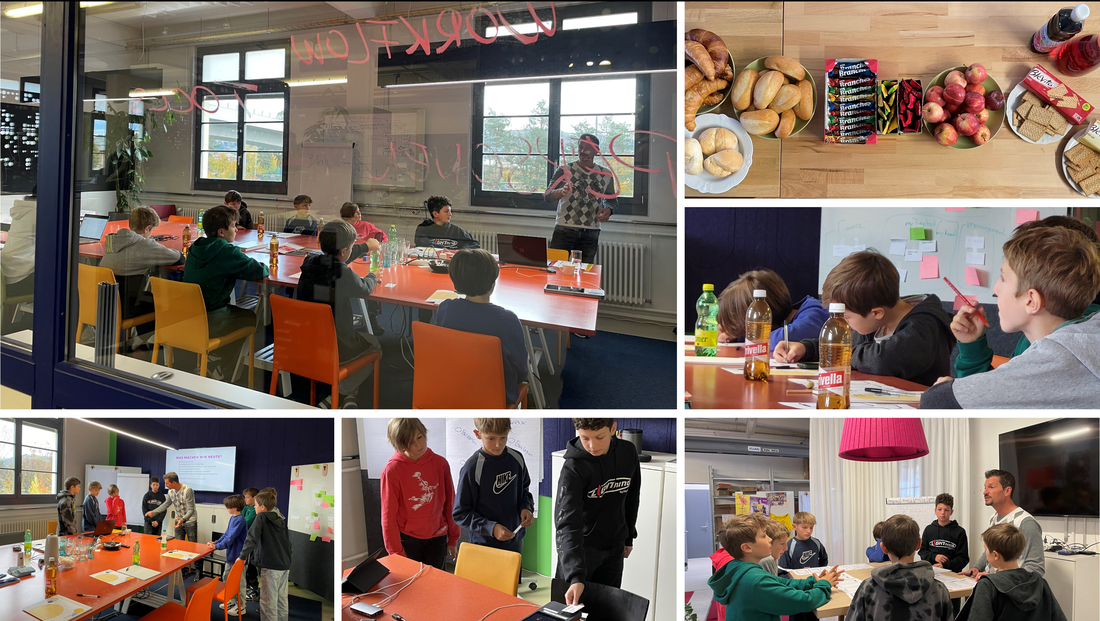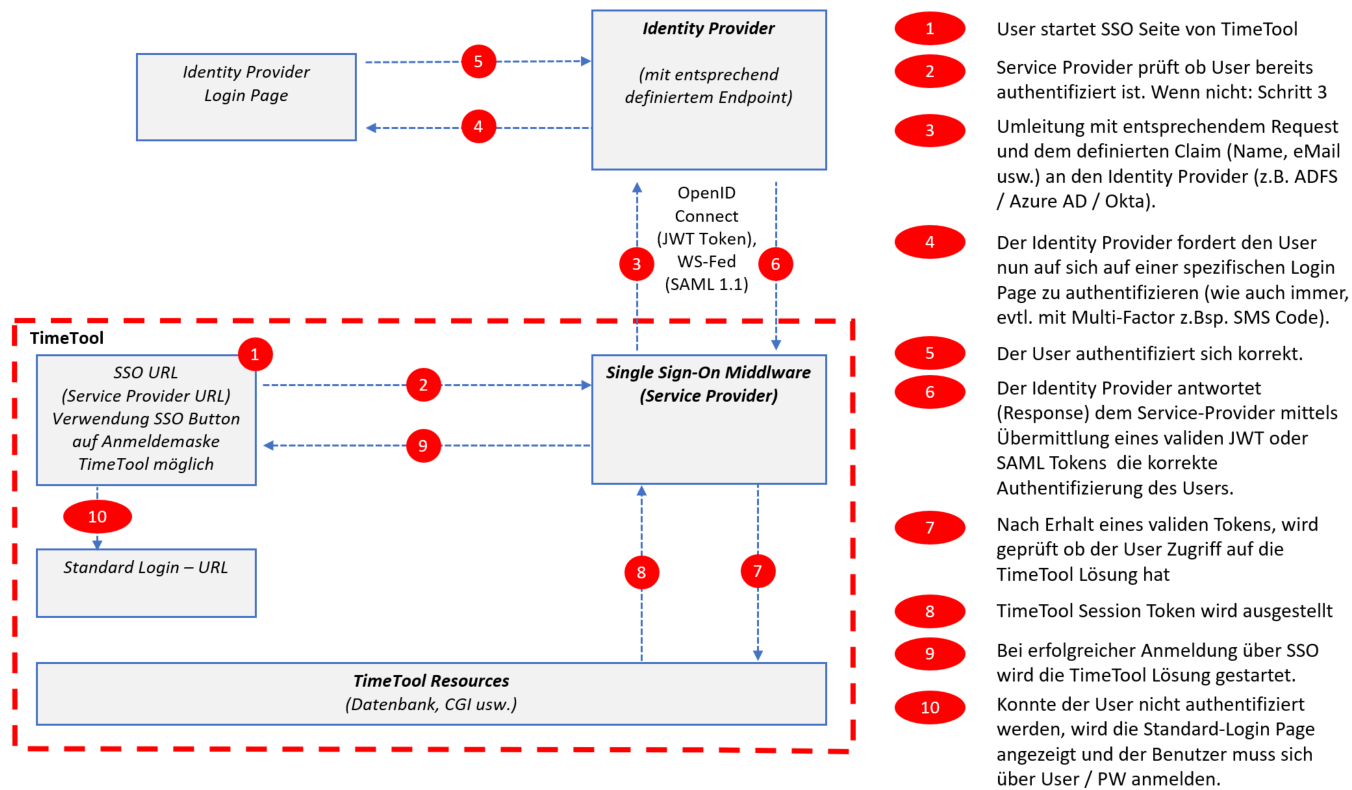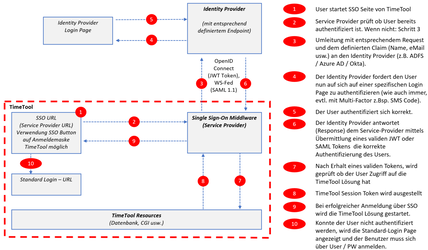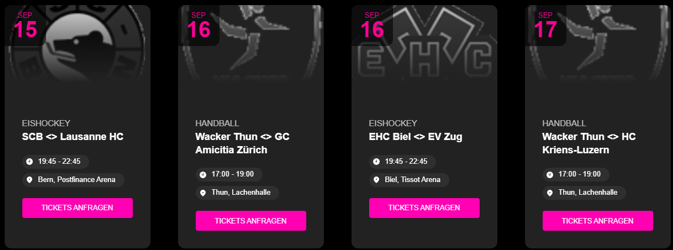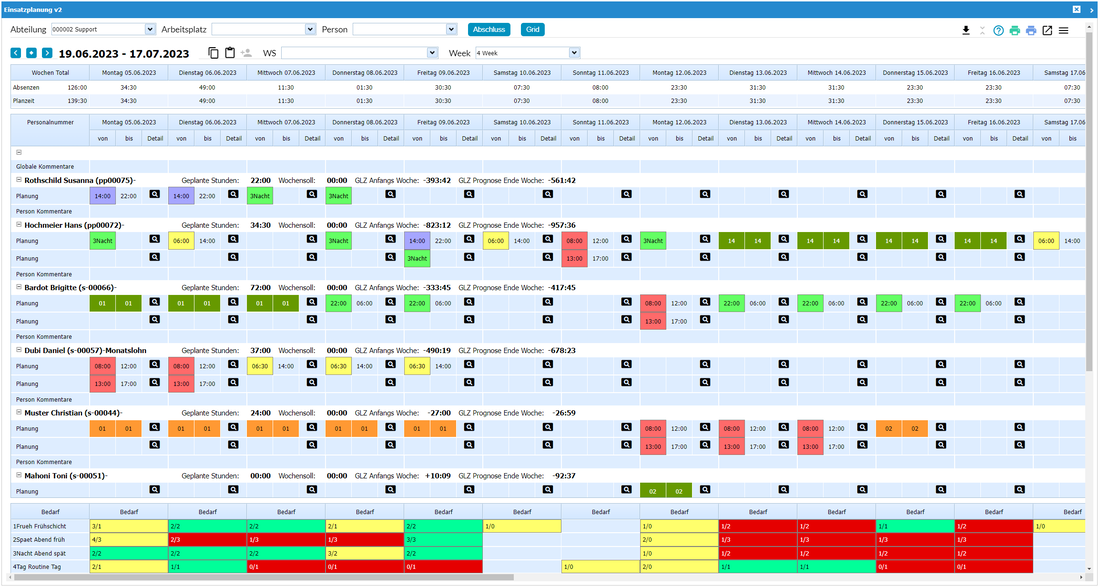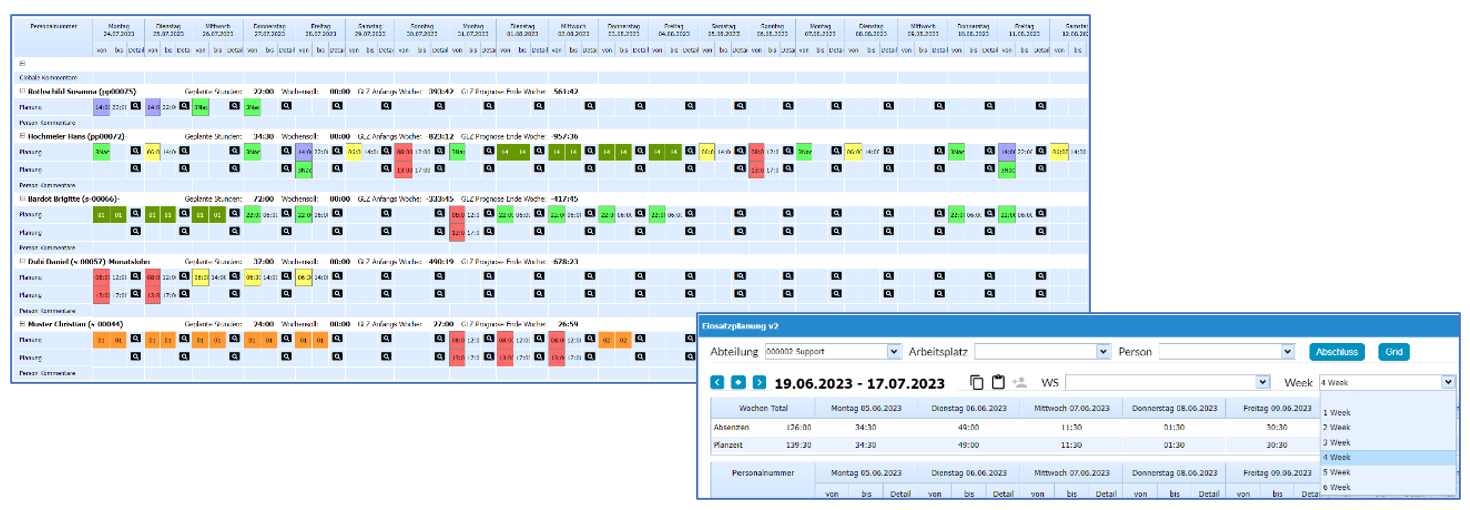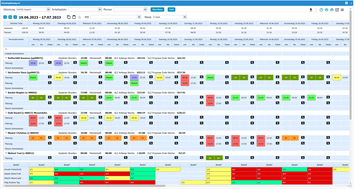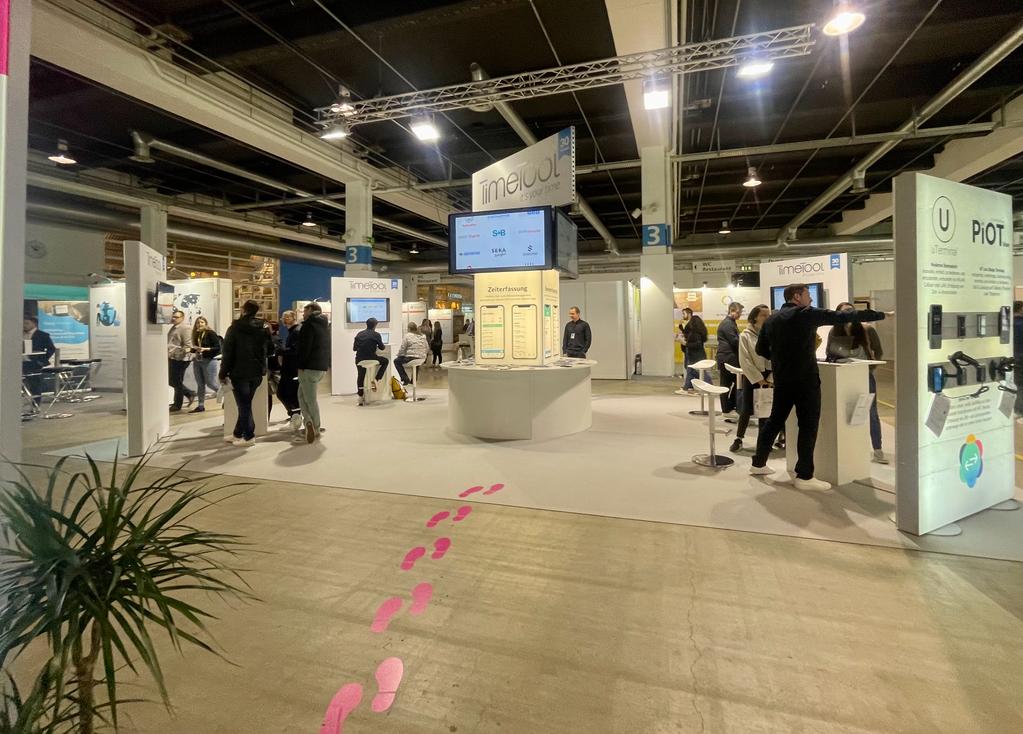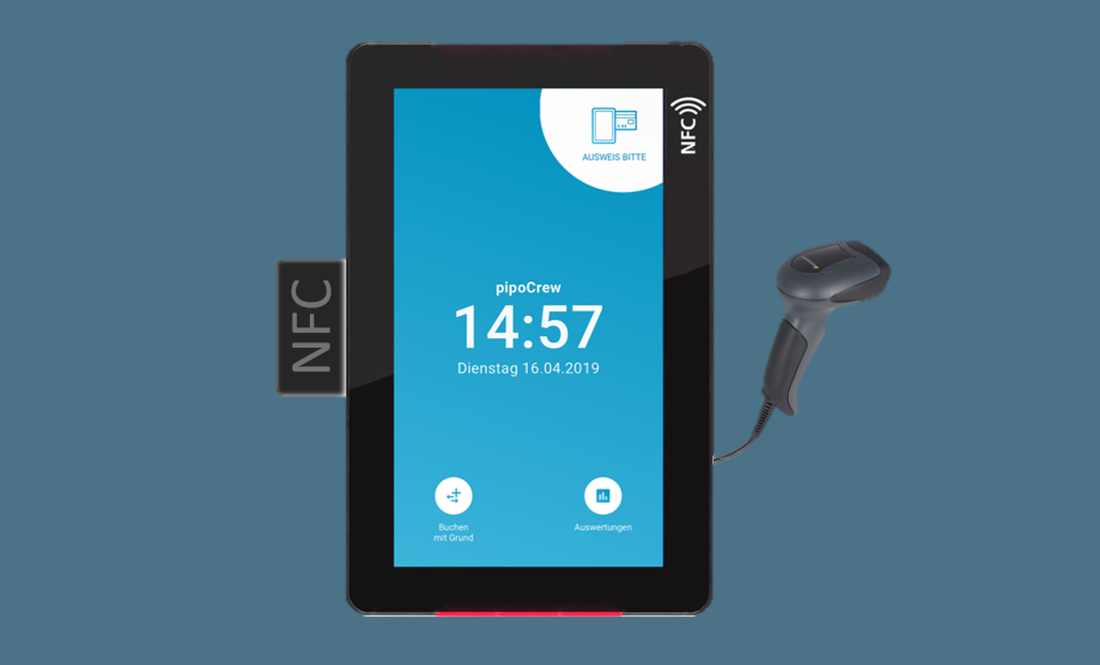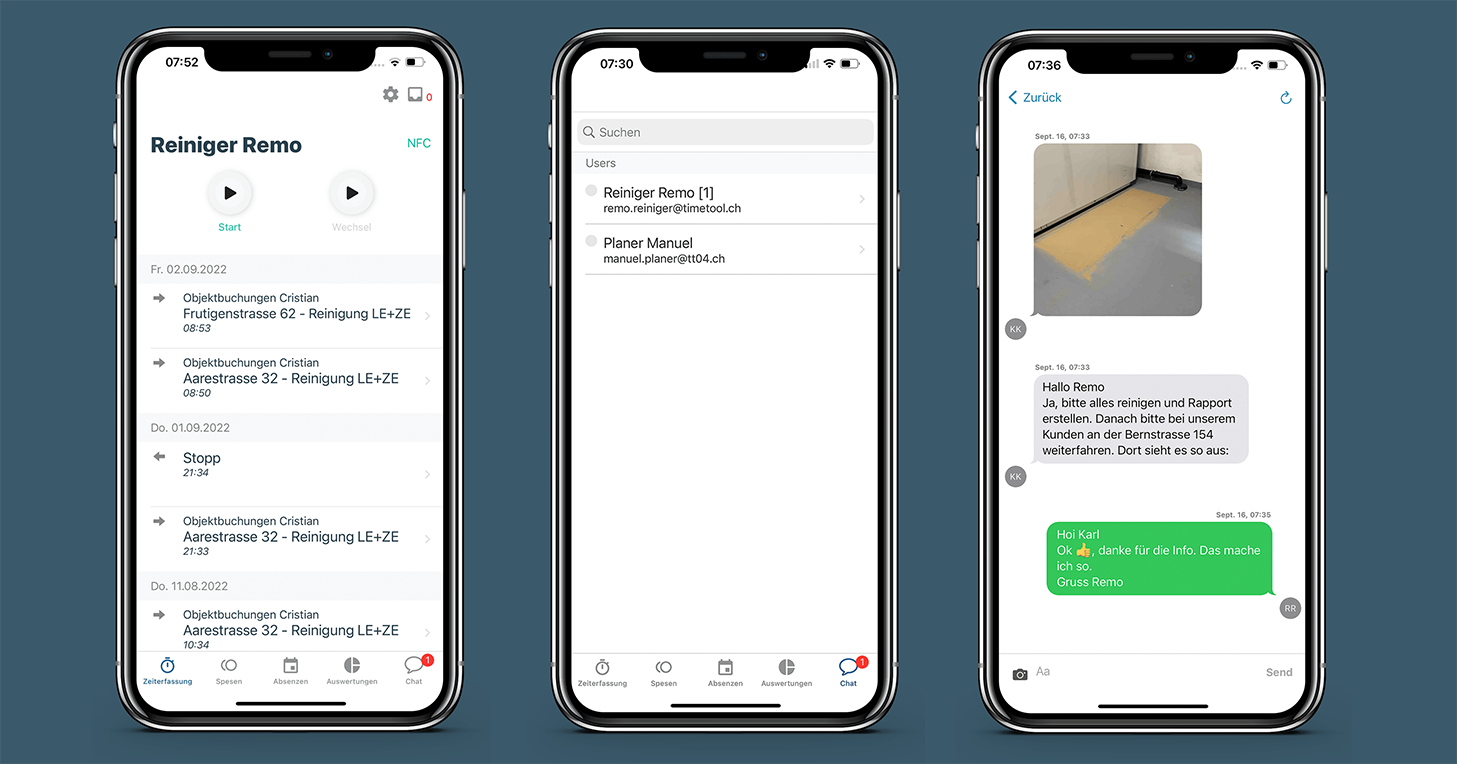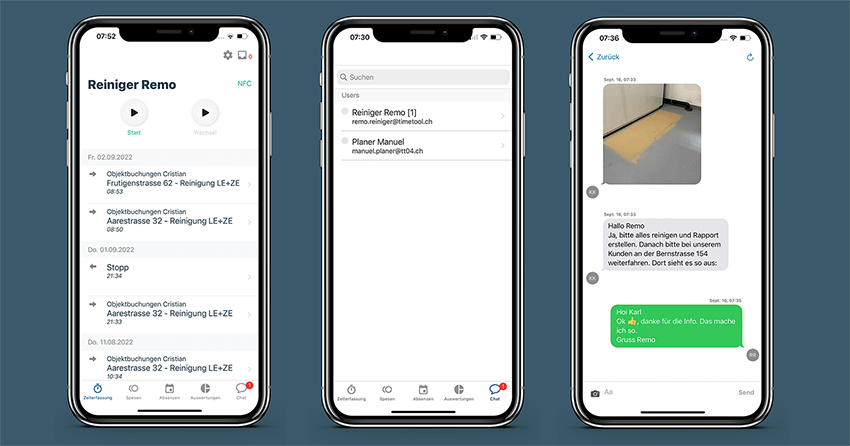|
Two days of pure HR with an interested and interesting audience, exciting contacts and valuable exchanges - a highlight for the HR community ... and for us.
We would love to be there again, so save the date March 25-26, 2025 and see you at the HR Festival Europe 2025. TimeTool♡SnowdaysWow, two days of sun, snow, fun and a really great team 🙌🏼
The premiere of the TimeTool♡Snowdays on the Hahnenmoos was a complete success. «TimeTool elevates transparency for our customers to a new level.»Alfred Hügli, Owner & Managing Director Hügli Reinigungen AG
Under the motto "TimeTool ♡ success stories", short videos and reports have been created which give individual insights into the partnership cooperation with a selection of our reference customers.The collection of success stories realised so far can be found here. We ♡ our customers. And we are happy about the valuable contacts and successful partnerships. MERCI. FUTURE DAY 2023On Thursday, November 9, 2023 TimeTool opened its doors and we were once again able to welcome eight interested schoolchildren on the occasion of National Future Day. In a varied, entertaining and exciting way, we introduced the children to various topics from the world of time management and IT and gave them interesting insights into the business world. A great day and an enrichment for everyone.
After a brilliant Töggeli match and a short tour of our premises, the kids really got going: how do I create an app and what do I actually need to do it? AI - what is it? What can AI do and how can it be used? What parts does a time recording terminal consist of and how do you put one together? And how can I create a website? These were questions that we clarified with the children during the eventful day. The kids were able to actively and creatively contribute, think and decide. Of course, fun and games as well as culinary delights were not to be missed. We would like to thank all the children and the TimeTool team for the eventful day and their dedicated cooperation - it was great fun. Hello Future Day 2024 😊. "Jackpot!" was the motto for Stefan Schmid at the TimeTool Festival - 30 years in June, because that was exactly the moment when he won the main prize of the anniversary raffle - a Thömus bike as desired. A few days ago the official bike handover took place at Thömus in Niederscherli. Congratulations again, Stefan, we wish you a good ride at all times and lots of fun with your new Thömus bike! Added value security:
|
|||||||||||||
| referenzbericht_huegli.pdf | |
| File Size: | 289 kb |
| File Type: | |
«AT TIMETOOL, PEOPLE LISTEN.
AND PRESENTS SUITABLE SOLUTIONS.»
Stefan Honegger, Chairman of the board of directors, Honegger AG
Why the big Honegger AG works hand in hand with the small TimeTool AG.
There are many pretty tools for time tracking. "But at TimeTool, they listen and present suitable solutions," says the owner of facility management provider Honegger AG.
"We were looking for a provider for time recording and absence and expense management that was close to us - mentally, geographically and factually." Stefan Honegger is one of those entrepreneurs who know exactly what they want. And when it comes to time recording, absence and expense management, he found what he wanted for his Honegger Group, based in Köniz, Bern, in Thun, with TimeTool AG: a partner who understands the cooperation with his customers as a service, and not as a simple order.
The owner of Honegger AG reports three different collective labor agreements to which the employees of the cleaning industry are assigned. Together with the janitors, gardeners and technical staff, there are 45 different categories of personnel to look after. "Visually pimped tools are of no use to me if they can't handle the existing complexity. I need something that works. With TimeTool, I get that."
Honegger says, "At TimeTool, they listen - and present suitable solutions." Which means nothing other than that he always finds open ears at the Thun-based company when he is once again looking for a solution that is tailored to his own company. "Elsewhere, I always hear 'that's not feasible'. At TimeTool, it's 'We're looking at it'." And if the proposed solution still doesn't meet his expectations one hundred percent, then they tinker and tweak together until it fits. "I value this interaction," says Stefan Honegger.
This interaction has also resulted in a solution at TimeTool for one of the biggest challenges facing the entire cleaning industry as a whole: the question of how to record the working and attendance time of cleaning personnel electronically and to the minute, without installing expensive readers at all the thousands of customers in their properties. "TimeTool has even come up with a solution for that," Honegger says. "Which is one of the reasons we really appreciate the collaboration."
"We were looking for a provider for time recording and absence and expense management that was close to us - mentally, geographically and factually." Stefan Honegger is one of those entrepreneurs who know exactly what they want. And when it comes to time recording, absence and expense management, he found what he wanted for his Honegger Group, based in Köniz, Bern, in Thun, with TimeTool AG: a partner who understands the cooperation with his customers as a service, and not as a simple order.
The owner of Honegger AG reports three different collective labor agreements to which the employees of the cleaning industry are assigned. Together with the janitors, gardeners and technical staff, there are 45 different categories of personnel to look after. "Visually pimped tools are of no use to me if they can't handle the existing complexity. I need something that works. With TimeTool, I get that."
Honegger says, "At TimeTool, they listen - and present suitable solutions." Which means nothing other than that he always finds open ears at the Thun-based company when he is once again looking for a solution that is tailored to his own company. "Elsewhere, I always hear 'that's not feasible'. At TimeTool, it's 'We're looking at it'." And if the proposed solution still doesn't meet his expectations one hundred percent, then they tinker and tweak together until it fits. "I value this interaction," says Stefan Honegger.
This interaction has also resulted in a solution at TimeTool for one of the biggest challenges facing the entire cleaning industry as a whole: the question of how to record the working and attendance time of cleaning personnel electronically and to the minute, without installing expensive readers at all the thousands of customers in their properties. "TimeTool has even come up with a solution for that," Honegger says. "Which is one of the reasons we really appreciate the collaboration."
Everything about the installation at Honegger AG:
| referenzbericht_honeggerag_.pdf | |
| File Size: | 203 kb |
| File Type: | |
The TimeTool terminal range has been extended by a new device: the pipoCrew terminal with 7'' display is on the one hand a classic time recording terminal, which provides the usual functions such as clocking in/out and balance queries. On the other hand, the device can be expanded with a barcode or QR code scanner, which ensures project, activity or order-related data collection.
The industrial-grade design, the Android-based operating system and the fast response time make the device an acquisition terminal for any application and all industries. All reporting functions configured in the installed pipoCrew app can be called up via the capacitive 7'' touch display. The integration into the local network can be done via WiFi or LAN with PoE option.
The industrial-grade design, the Android-based operating system and the fast response time make the device an acquisition terminal for any application and all industries. All reporting functions configured in the installed pipoCrew app can be called up via the capacitive 7'' touch display. The integration into the local network can be done via WiFi or LAN with PoE option.
RFID media from different manufacturers can be read with the integrated NFC reader. The reaction and response times show an extremely user-friendly behavior - via the display, users are informed in a reasonable time with answers on the booking status.
Thanks to the mounting device incl. screw set included in the scope of delivery, the terminal is installed and ready for use in just a few minutes. Installed on the wall, the device appears small and handy. Due to the small volume with the dimensions 168 x 120 x 24 mm, not too much space is needed for the installation.
Would you like to learn more about the pipoCrew Terminal 7''? We are looking forward to getting in contact with you.
SAVE THE DATE
TimeTool at the HR Festival 2023
Before the end of the year, we would like to draw your attention to one of the most important HR events in the new year. As in previous years, we will be present as an exhibitor at the HR Festival at Messe Zürich to present our solutions, news and highlights to as large an audience as possible.
And for the first time in TimeTool's history, our employees will be represented at two exhibition stands... We don't want to reveal any more at this point - it's best if you visit us on site on 28 or 29 March 2023.
Have you made a note of this date in your diary? We are looking forward to your visit.
And for the first time in TimeTool's history, our employees will be represented at two exhibition stands... We don't want to reveal any more at this point - it's best if you visit us on site on 28 or 29 March 2023.
Have you made a note of this date in your diary? We are looking forward to your visit.
After a break of four years, we had the pleasure to welcome six interested school children on the occasion of the National Future Day on November 10, 2022. The Future Day is a great opportunity for TimeTool to give children an insight into the world of time management and IT.
After a introduction to the working day with the accompanying persons and a tour of our premises, the kids got down to business: How do I create an app and what do I need? What parts does a time recording terminal consist of and how do you assemble one? And how can I create a website? Questions upon questions, which we clarified with the children during the eventful day. The kids were able to actively and creatively participate and lend a hand themselves. Of course, fun and games as well as culinary delights were not to be missed.
We would like to thank all the children and the TimeTool team for the eventful day and their dedicated cooperation - it was great fun 😊
We are already looking forward to the Future Day 2023!
After a introduction to the working day with the accompanying persons and a tour of our premises, the kids got down to business: How do I create an app and what do I need? What parts does a time recording terminal consist of and how do you assemble one? And how can I create a website? Questions upon questions, which we clarified with the children during the eventful day. The kids were able to actively and creatively participate and lend a hand themselves. Of course, fun and games as well as culinary delights were not to be missed.
We would like to thank all the children and the TimeTool team for the eventful day and their dedicated cooperation - it was great fun 😊
We are already looking forward to the Future Day 2023!
«TimeTool is one step ahead of the competition in terms of user-friendliness.»
Matthias Feierabend CFO I Head HR, Jakob AG
Following the motto «TimeTool ♡ success stories» short videos and reports have been created which give individual insights into the cooperative partnership with a selection of our reference customers.
The collection of success stories realized so far can be found here.
We ♡ our customers. And we are happy about the valuable contacts as well as successful partnerships. THANK YOU.
Patrik Augello
BLT Baselland Transport AG
Head of HR Services
BLT Baselland Transport AG
Head of HR Services
BLT BASELLAND TRANSPORT AG
Experiences from the project at BLT, with Patrik Augello
BLT is a public transport company that is characterized by clear customer orientation, high cost awareness, above-average performance and technical innovations.
More than 100,000 passengers use BLT's streetcar, bus and rail services in the Basel area every day, arriving at their destinations relaxed, safely and on time.
At the beginning of 2022, BLT put TimeTool's time recording into operation for the ancillary operations as well as the administration. What were the decisive factors that led you to choose our solution?
"Two factors in particular were decisive: First, we were convinced by the versatility of TimeTool. Our requirements regarding the connection to further systems as well as the possibilities with a view to the future (duty scheduling, project and performance recording) were very well met by your system. The handling in the backend was also an important point. The final decision to implement TimeTool and not another time recording system was based on the fact that we could already identify with your service and customer orientation during the evaluation phase. This was very important to us after replacing the old time recording system."
From your point of view, what were the biggest challenges during the system implementation and what would you do differently next time?
"The time and attendance implementation went almost smoothly and we probably wouldn't do anything differently at this point. But the biggest challenges will probably come in the coming weeks and months anyway, when we add more employee groups to the system and introduce duty scheduling right alongside electronic time recording."
Working together as partners is important in projects like this. How did you experience the cooperation with TimeTool?
"After this was an important factor in the decision-making process, we can happily say that TimeTool and their employees have completely fulfilled our expectations. The system operation has been established and if something does come up, our concerns are handled quickly and professionally. So far, it is definitely a partnership as we would like it to be and we can highly recommend it."
You were previously using a different solution. From your point of view, what are the advantages of TimeTool compared to the previous system?
"The biggest advantages of TimeTool are the comparatively simple handling in the backend, as well as the smooth connection to the payroll system. But also the above-mentioned expansion options for project time recording and duty scheduling are a big plus."
TimeTool AG would like to thank Baselland Transport AG for the experience gained from the joint project and is looking forward to further cooperation and the next projects.
Experiences from the project at BLT, with Patrik Augello
BLT is a public transport company that is characterized by clear customer orientation, high cost awareness, above-average performance and technical innovations.
More than 100,000 passengers use BLT's streetcar, bus and rail services in the Basel area every day, arriving at their destinations relaxed, safely and on time.
At the beginning of 2022, BLT put TimeTool's time recording into operation for the ancillary operations as well as the administration. What were the decisive factors that led you to choose our solution?
"Two factors in particular were decisive: First, we were convinced by the versatility of TimeTool. Our requirements regarding the connection to further systems as well as the possibilities with a view to the future (duty scheduling, project and performance recording) were very well met by your system. The handling in the backend was also an important point. The final decision to implement TimeTool and not another time recording system was based on the fact that we could already identify with your service and customer orientation during the evaluation phase. This was very important to us after replacing the old time recording system."
From your point of view, what were the biggest challenges during the system implementation and what would you do differently next time?
"The time and attendance implementation went almost smoothly and we probably wouldn't do anything differently at this point. But the biggest challenges will probably come in the coming weeks and months anyway, when we add more employee groups to the system and introduce duty scheduling right alongside electronic time recording."
Working together as partners is important in projects like this. How did you experience the cooperation with TimeTool?
"After this was an important factor in the decision-making process, we can happily say that TimeTool and their employees have completely fulfilled our expectations. The system operation has been established and if something does come up, our concerns are handled quickly and professionally. So far, it is definitely a partnership as we would like it to be and we can highly recommend it."
You were previously using a different solution. From your point of view, what are the advantages of TimeTool compared to the previous system?
"The biggest advantages of TimeTool are the comparatively simple handling in the backend, as well as the smooth connection to the payroll system. But also the above-mentioned expansion options for project time recording and duty scheduling are a big plus."
TimeTool AG would like to thank Baselland Transport AG for the experience gained from the joint project and is looking forward to further cooperation and the next projects.
Would you like to learn more about solution concepts from your industry? We are looking forward to hearing from you.
pipoDialog App with integrated chat function
Secure communication thanks to in-app chat
We all know it: adhoc communication in day-to-day business within a team often takes place via WhatsApp, SMS, Telegram or other publicly available apps. Everyone does it differently and in their own way. And in the worst case, every time information is exchanged, it is communicated via different channels.
We at TimeTool want to create clear connections in the area of time management - true to our motto "everything is connected". For example, communication between employees and teams should take place directly in our pipoDialog app, if necessary. Important information, such as shift swaps, work to be done at the customer's or simply the transfer of a photo of work carried out, is immediately stored in a uniform manner and in the right system.
But how does it work? The in-app chat integrated in our app is connected to the corresponding user groups via permissions. It is defined whether employees of an organisational unit are allowed to chat with each other or whether an exchange of messages is even allowed across organisations.
We at TimeTool want to create clear connections in the area of time management - true to our motto "everything is connected". For example, communication between employees and teams should take place directly in our pipoDialog app, if necessary. Important information, such as shift swaps, work to be done at the customer's or simply the transfer of a photo of work carried out, is immediately stored in a uniform manner and in the right system.
But how does it work? The in-app chat integrated in our app is connected to the corresponding user groups via permissions. It is defined whether employees of an organisational unit are allowed to chat with each other or whether an exchange of messages is even allowed across organisations.
In order to be able to write a message to someone from the team or even a person from another organisational unit, users select the desired person from the corresponding contact address book. In addition to pure text messages, photos can also be placed in the in-app chat. Users are informed about incoming messages by means of a push message, provided this is permitted on the mobile device. All text and image messages are stored and archived on the respective TimeTool server; this ensures consistent communication through the in-app chat.
Are you interested in more information about in-app chat? Contact us and request more information via our contact form. We are looking forward to it.
«We now have more time to coach, support and individually promote our managers.»
Nicole Didio Director HR Switzerland, Ricola
Following the motto «TimeTool ♡ success stories» short videos and reports have been created which give individual insights into the cooperative partnership with a selection of our reference customers.
The collection of success stories realized so far can be found here.
We ♡ our customers. And we are happy about the valuable contacts as well as successful partnerships. THANK YOU.
TimeTool ♡ Engagements
This year, too, we are supporting associations, clubs, festivals and innovative projects as part of our ♡ commitments. It is very important to us to support sports enthusiasm, spirit and passion. In this way, we would like to make an active contribution to strengthening successful and likeable sportsmen and sportswomen as well as local cultural events.
We wish all our partners numerous emotional experiences and the greatest possible success. It's your time...
We wish all our partners numerous emotional experiences and the greatest possible success. It's your time...
�
ARCHIVES
April 2024
März 2024
Dezember 2023
November 2023
September 2023
August 2023
Juli 2023
April 2023
Januar 2023
Dezember 2022
November 2022
Oktober 2022
September 2022
Juli 2022
Juni 2022
Mai 2022
April 2022
März 2022
Dezember 2021
November 2021
September 2021
Juli 2021
Juni 2021
April 2021
März 2021
Januar 2021
September 2020
Juli 2019
März 2019
CATEGORIES
Alle
Apps
Engagements
Events
Hardware
Knowhow Box
Project Reports
Software
Stories
Success Stories
Support
NEWSLETTER ARCHIVES
2023
TimeTool News 2023 #04
TimeTool News 2023 #03
TimeTool News 2023 #02
TimeTool News 2023 #01
2022
TimeTool News 2022 #04
TimeTool News 2022 #03
TimeTool News 2022 #02
TimeTool News 2022 #01
2021
TimeTool News 2021 #04
TimeTool News 2021 #03
TimeTool News 2021 #02
TimeTool News 2021 #01
2020
TimeTool News March 2020
2019
TimeTool News Sept. 2019
TimeTool News July 2019
TimeTool News May 2019
TimeTool News March 2019
TimeTool News Jan. 2019
2023
TimeTool News 2023 #04
TimeTool News 2023 #03
TimeTool News 2023 #02
TimeTool News 2023 #01
2022
TimeTool News 2022 #04
TimeTool News 2022 #03
TimeTool News 2022 #02
TimeTool News 2022 #01
2021
TimeTool News 2021 #04
TimeTool News 2021 #03
TimeTool News 2021 #02
TimeTool News 2021 #01
2020
TimeTool News March 2020
2019
TimeTool News Sept. 2019
TimeTool News July 2019
TimeTool News May 2019
TimeTool News March 2019
TimeTool News Jan. 2019







